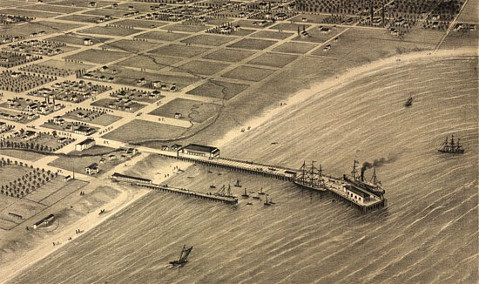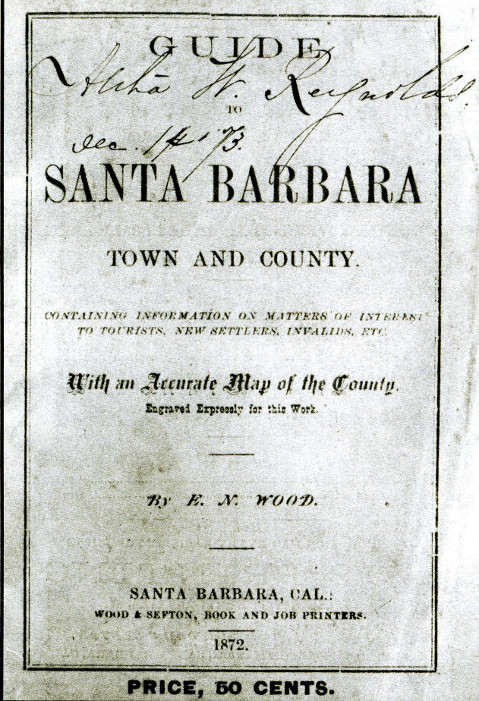Santa Barbara’s First Book
E. N. Wood Wrote Guidebook to the Area

A small booklet appeared toward the end of 1872, Guide to Santa Barbara Town and County by E. N. Wood, printed by E. N. Wood and A. W. Sefton, Job Printers. Not only was it the first book published here, but it was one of the earliest promotional books for any town in Southern California.
The 1870s were an important transitional period in our city’s history. The economy became more diversified and more tied into the national economy with the completion of Stearns Wharf in 1872. The importance of tourism grew; the city’s first luxury hotel, the Arlington, opened in 1875. Wood’s booklet reflected these trends, aimed at visitors, both those passing through and possible settlers.

Wood was a transplanted Vermonter who had served for a time as a surgeon in the Navy. He then slowly began working his way west, finally settling in Santa Barbara in 1870. He had come here, as so many did, for his health, just the sort of person for whom he would write his book.
Wood dropped the practice of medicine and went to work as an editor for the Santa Barbara Press. In August 1872, Wood left the Press and, with Sefton, founded the Santa Barbara Index, a partisan journal of the Democratic Party featuring poetry penned by Wood’s wife, Mary. This new venture was short-lived for on October 14, 1874, Wood died of consumption; the healthful benefits of this area were of no avail.
Wood’s unabashed tone of boosterism reflects the optimism of the 1870s. He describes the city of 3,500 and the county of 10,000 souls (which included present-day Ventura County) in glowing terms. The county had doubled in population in the last five years. He points out that Santa Barbara is one of the most inexpensive places to live in a state that is one of the most inexpensive in the union. Times have indeed changed.
Wood lists the lodging amenities the city has to offer, including the Upham, now the city’s oldest hotel, then a boarding house. Wood also mentions the St. Charles which, as the Alpheus Thompson adobe, had been one of the first Monterey-style adobes built in California. The city’s new public library receives prominent mention. He also included a map of the county.
As may be expected, Wood promotes the healthful benefits of the region’s climate. What is most curious to modern-day readers is his touting of the oil slicks floating offshore being of medicinal value as they are “acting as a disinfecting agent with prevailing sea breezes.” Agriculture gets much play, as Wood compares the region to Palestine, quoting from Deuteronomy to make his point. He boasts of the richness of the soil, which supports everything from walnuts to grain to grapevines to silkworms.
He includes a fairly lengthy discussion of earthquakes, pointing out that tremors do occur but that hardly any damage is ever inflicted. “The destruction of life in the whole state cannot be compared with that caused by eating … that American compound called pie.” He goes on to point out to Easterners that dying from sunstroke in New York City is a much greater threat than death due to earthquake.
The booklet sold for 50 cents, and today there are only a handful of copies extant. Although hardly objective in tone, this rare item gives a fascinating glimpse into South Coast life as it was lived more than 140 years ago.
Michael Redmon, director of research at the Santa Barbara Historical Museum, will answer your questions about Santa Barbara’s history. Write him c/o The Santa Barbara Independent, 122 West Figueroa Street, Santa Barbara, CA 93101.



